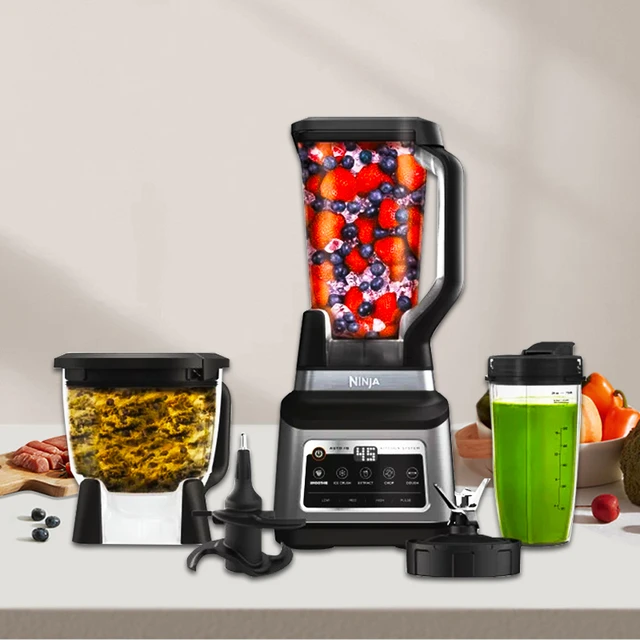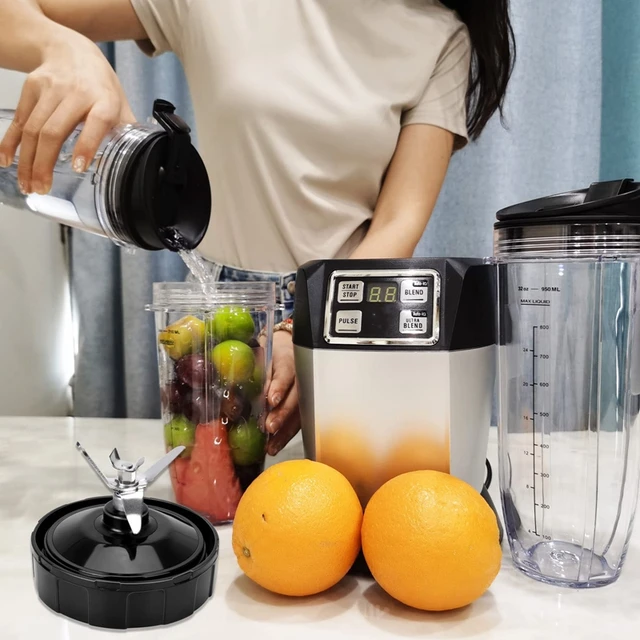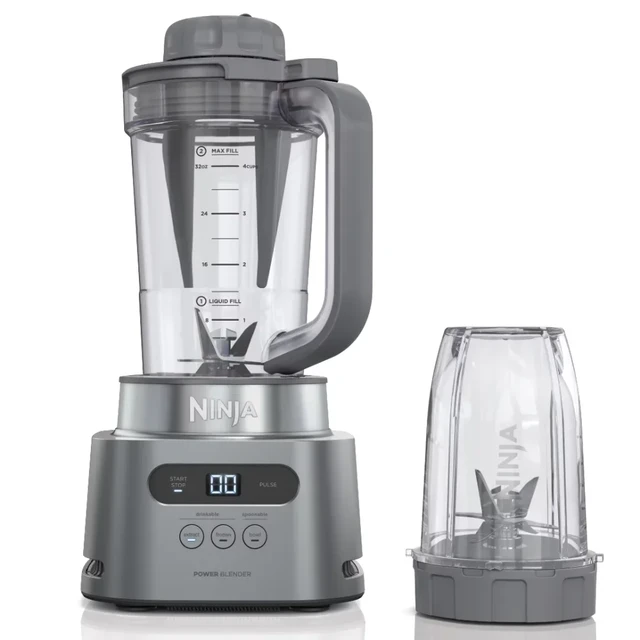
Introduction
A Ninja blender is a versatile kitchen appliance that can quickly and easily blend ingredients for smoothies, soups, and more. However, like any electrical device, it can encounter issues that prevent it from turning on. If you’re facing the frustrating problem of a Ninja blender that won’t start, there are several potential causes to consider. In this guide, we will explore common reasons why a Ninja blender may not turn on, along with troubleshooting steps to resolve the issue and get your blender up and running.

Why wont my Ninja blender turn on?
I. Check the Power Source
-
Verify Power Connection:
- Ensure that your Ninja blender is securely plugged into a functioning power outlet. Occasionally, a loose power connection can prevent the blender from turning on.
-
Test a Different Outlet:
- Plug the blender into a different outlet in your kitchen or another room to ensure that the issue is not with the specific outlet.
-
Power Surge or Circuit Breaker:
- If you recently experienced a power surge or if a circuit breaker tripped, check if the outlet is receiving power. Reset the circuit breaker or contact an electrician if necessary.

II. Assess the Power Cord and Plug
-
Inspect the Power Cord:
- Examine the power cord for any visible signs of damage, such as fraying or cuts. A damaged power cord can prevent the blender from receiving adequate power.
-
Confirm Secure Connection:
- Check that the power cord is securely connected to the blender’s base and that there are no loose or bent pins on the plug.
-
Consider Replacement:
- If you identify any damage to the power cord or plug, it may be necessary to replace them. Contact the manufacturer or an authorized service center for assistance.
III. Blender Jar and Lid Placement
-
Align Blender Jar Correctly:
- Ensure that the blender jar is positioned correctly on the blender’s base. The jar should align with the blades and lock securely into place.
-
Verify Lid Placement:
- Check that the lid is properly secured on the blender jar. Some Ninja blenders have a safety mechanism that prevents the blender from turning on if the lid is not properly in place.

IV. Check the Power and Pulse Buttons
-
Inspect Buttons:
- Examine the power and pulse buttons on the blender’s control panel. Look for any signs of damage or debris that may be obstructing the buttons’ functionality. Use a clean cloth to wipe away any dirt or residue.
-
Press Firmly:
- Ensure that you are pressing the buttons firmly and holding them for a few seconds to activate the blender. Sometimes, a weak or brief press may prevent the blender from starting.
V. Overheating Protection
-
Allow Cooling Time:
- If the Ninja blender has been running continuously for an extended period, it may have automatically shut off as a safety measure to prevent overheating. Allow the blender to cool down before attempting to turn it on again.
-
Resetting the Blender:
- Some Ninja blender models have a reset button located on the base. Press and hold this button for a few seconds to reset the blender. Refer to the blender’s manual for specific instructions.
VI. Blending Unit Assembly
-
Secure Assembly:
- Ensure that the blending unit is correctly attached to the base and securely locked into place. In some models, an improperly assembled unit may prevent the blender from turning on.
-
Blade Blockage:
- If the blender blade is blocked by food particles or ingredients, it may hinder the motor’s ability to start. Remove the blending unit from the base and inspect the blade for any obstructions. Clean as necessary.

VII. Test with Different Ingredients
-
Ingredient Compatibility:
- Certain ingredients, such as frozen fruits, ice, or tough fibrous materials, can strain the blender’s motor. Try blending different ingredients or adjust the blending settings to determine if the issue lies with the specific ingredients you’re using.
VIII. Contact Customer Support
-
Manufacturer Assistance:
- If you have exhausted all troubleshooting steps and your Ninja blender still refuses to turn on, consider contacting the manufacturer’s customer support. They can provide further guidance or instructions for repair or replacement options.
-
Authorized Service Center:
- If your blender is still under warranty or if the manufacturer recommends it, take your Ninja blender to an authorized service center for professional inspection and repair.
X. Preventive Measures for Future Use
-
Proper Cleaning and Maintenance:
- Regularly clean and maintain your Ninja blender to keep it in good working condition. Follow the manufacturer’s instructions for cleaning the blender jar, lid, and blades. Pay attention to any specific cleaning recommendations and remove any buildup or debris that may impede the blender’s functionality.
-
Avoid Overloading:
- Do not overload the blender with too many ingredients or fill the jar beyond the recommended capacity. Overloading can strain the motor and cause it to malfunction. Follow the manufacturer’s guidelines for maximum capacity to ensure optimal blending performance.
-
Use Correct Blades:
- Make sure you are using the appropriate blades for the ingredients you are blending. Ninja blenders often come with different blade attachments for different purposes, such as ice crushing or food processing. Using the correct blade for the task at hand can help prevent strain on the motor and ensure smooth blending.
-
Allow for Cooling Periods:
- If you are using the blender for an extended period or blending multiple batches, allow the blender to cool down between uses. This can prevent overheating and prolong the lifespan of the motor.

IX. Conclusion: Resolving the Issue
A Ninja blender that won’t turn on can be frustrating, but by following these troubleshooting steps, you can identify and resolve the problem. Begin by checking the power source and the power cord for any issues. Ensure that the blender jar and lid are correctly positioned, inspect the power and pulse buttons, and consider the blender’s overheating mechanism. Check the assembly and blades for proper attachment and cleanliness. Experiment with different ingredients and blending settings to rule out specific ingredient issues.
If all troubleshooting steps fail, reach out to the manufacturer’s customer support or visit an authorized service center for further assistance. With some patience and problem-solving, you’ll soon have your Ninja blender operating smoothly once again.